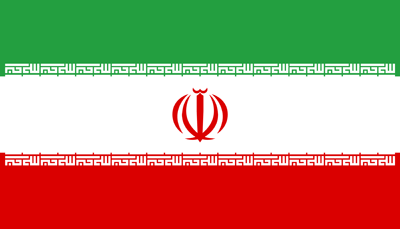MAIN BARRIERS AND POTENTIAL SOLUTIONS IN THE DEVELOPMENT OF
ENERGY EFFICIENT BUILDINGS IN IRAN
Dr. Fereshteh Hajigholami
Iran is considered as one of the developing countries in the Middle East with high levels of energy consumption. Enhancing the energy efficiency of buildings can be regarded as a sustainable method of reducing the energy consumption and subsequently, the environmental impacts in Iran. Only a few buildings in Iran are constructed via using EE strategies, but they are built with less or unsuccessful operations and neglects in the implementation of EE technical solutions. This paper presents 8 categories of barriers in the developing of EEBs in Iran and 4 categories of measures to overcome the barriers and to promote sustainable building practices, drawn from qualitative research undertaken with 8 energy efficiency building and designs via semi-structured interviews. The barriers that were identified by 16 interviewees of 8 energy efficient case study are: 1) Low energy prices in Iran, 2) Lack of interest by client for applying EE solutions in their building, 3) Applying EE solutions in building cost too much, 4) Lack of political will, legislation and enforcement, ۵) Lack of technical understanding among project team members, 6) Lack of interest by project team members, 7) Lack of some of the EEB components on the Iran markets, and 8) Lack of leadership in EEB projects. Whilst measures suggested by interviewees are: 1) Action by government, 2) Action by education Sector, 3) Action by private sector, and 4) Action by Clients. The paper concludes that regional characteristics need to be reflected in any sustainability assessment methodologies in order to encourage sustainable development locally.
According to the Ministry of Energy of Iran, energy consumption in Iran is high and it causes of environmental impacts specially in building sector. Commercial and residential buildings represent 42% of total energy consumption in Iran. Also the largest amounts of CO2 emissions are produced by this energy consumer section. Enhancing the EE of buildings can be regarded as a sustainable method of decreasing the energy consumption and subsequently, the environmental impacts in Iran. In order to find a solution to develop and construct buildings which are EE in this region, it is essential to discover and introduce barriers and technical solutions and strategies about the local potentials and conditions. Thus, having a clear understanding of the existing barriers and experiences and the ongoing local conditions is essential in evaluating the employed solutions. Finding barriers to implementing EE practices and features in buildings in Iran is essential. A few buildings designed base on EE in Iran. However they are built with less or unsuccessful operations and neglects in the implementation and some projects were stopped upon designing and were never implemented. Also there is not any study on the level of practice and barriers of implementing EE in Iran.
As such, one might wish to question why there are continuous presences of, and increasing problems related to, the environment in Iran. It appears that the majority of new developments in Iran demonstrate very few sustainability principles, processes and outcomes. The question then arises of why is this so. What is stopping sustainable building developments from being realized in practice?
This paper aims to study for developing of energy efficient buildings in Iran through identify the experiences of energy efficient buildings in Iran and main barriers and potential drivers in the developing of energy efficient buildings in Iran.
This paper complements previous research on barriers to the implementation of sustainability that take a theoretical and classificatory approach and those that investigate current practice. The paper first outlines the method used in the research. Then the barriers to achieving energy efficiency that were identified by the interviewees are described. It then presents the solutions suggested by the interviewees to lower those barriers and to promote energy efficiency in the Iranian construction industry.
In this study besides finding main barriers in the development of energy efficient buildings in Iran, interviewees were also suggesting some solutions to decrease the barriers as well as to promote energy efficiency in construction industry of Iran. Total 94 actions were suggested from 16 interviewees of architects of 8 selected energy efficient case studies in this research. The research has recognized 4 categories of interviewee’s suggestions to reduce barriers, including: Actions by Government, Education Sector and Private Sector and finally by Clients.
A set of recommended actions can be proposed to ensure a rapid and successful widespread adoption of EE technology in Iran. This study revealed that, awareness is still one of the major barriers that need to be overcome especially among schools and college students so that the information can also be carried to their homes and disseminated into their families’ members. Therefore, there is a lack of education about EE technology among the building sector and public. This can be addressed by introducing more EE education programme through more effective communication means or channels like TV and internet. Another major barrier is the economic barrier. Most of the respondents expressed their view that the high investment cost of EE is the problem hindering them. This problem of high investment cost of EE also results in long payback period. Therefore, higher subsidy is needed for the purchase of EE installation. This social attitude and altruistic characteristic is an added advantage for rapid diffusion of EE technology.
In summary, EE has a long gestation period and it requires government long term commitment. Constant review of government incentives like tax exemption or rebate is one of the vital means for promoting BIPV technology. The government of Iran need to review their green policies and programmes regularly in order to main a sustainable market environment for rapid adoption of EE technology.

